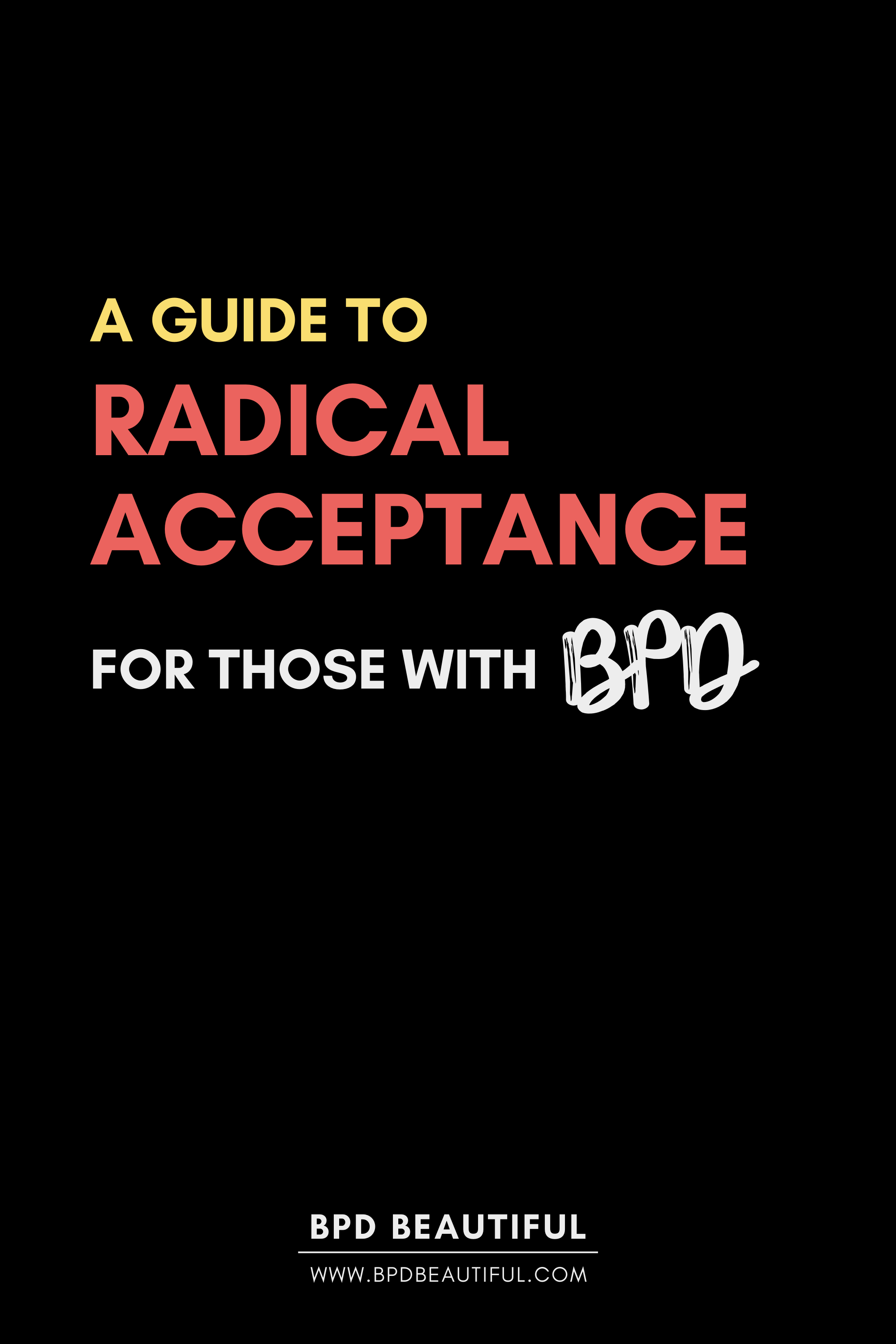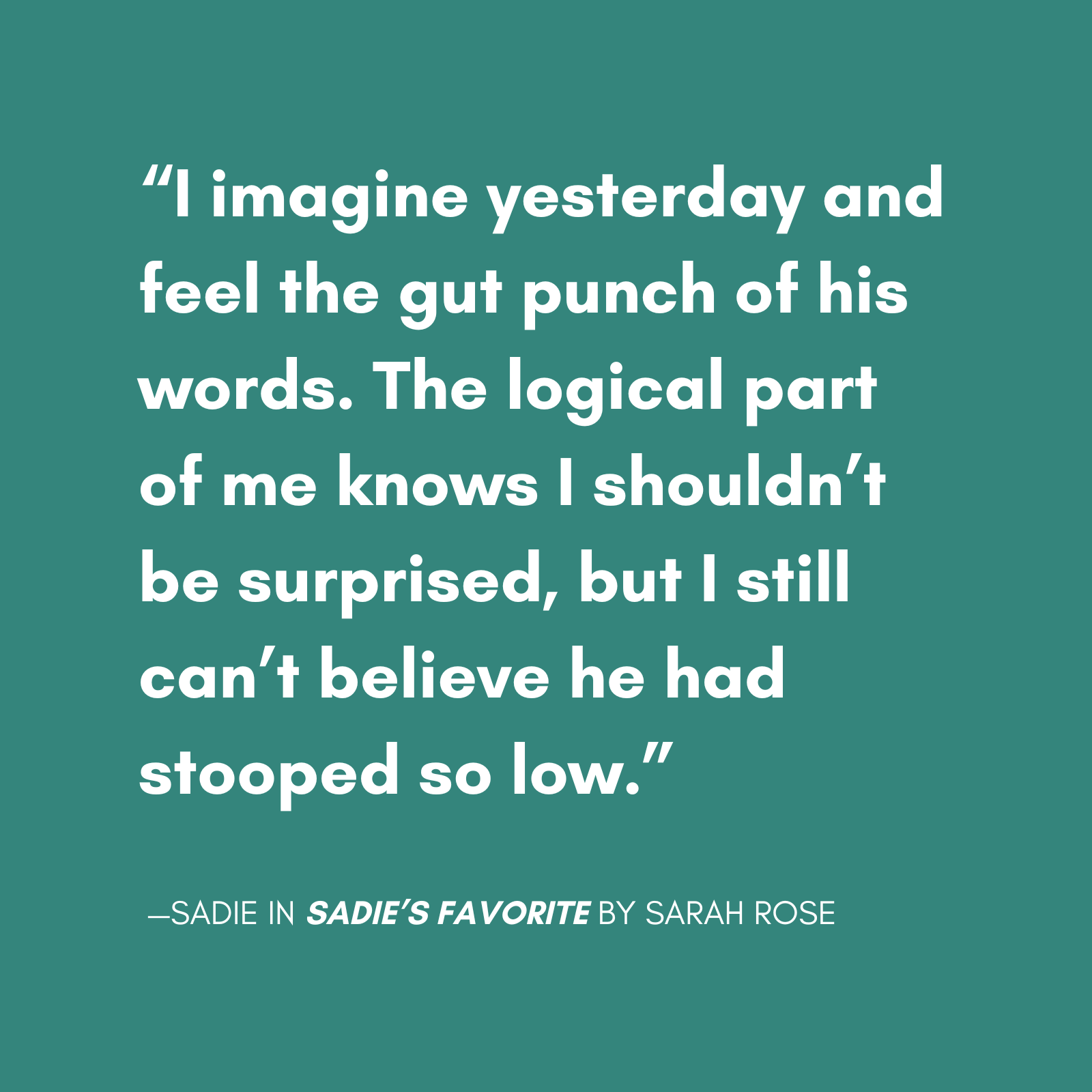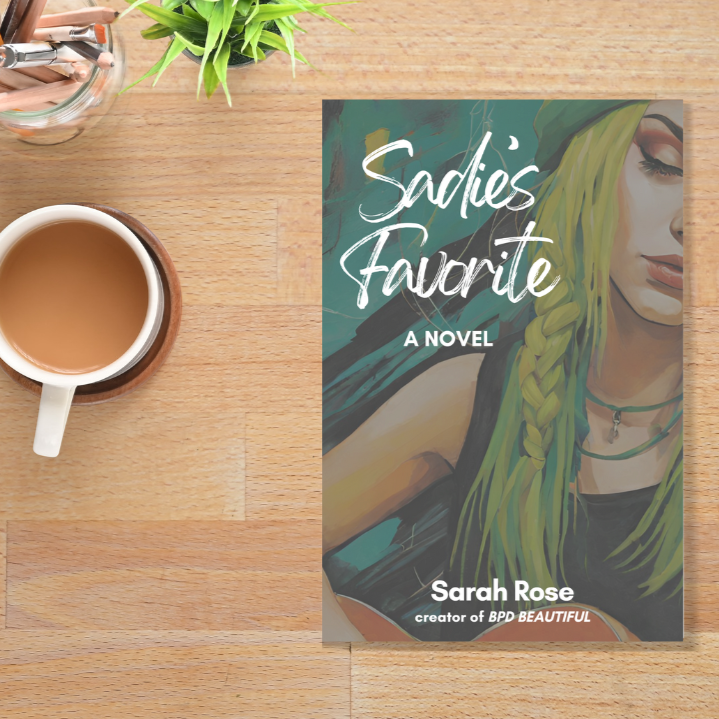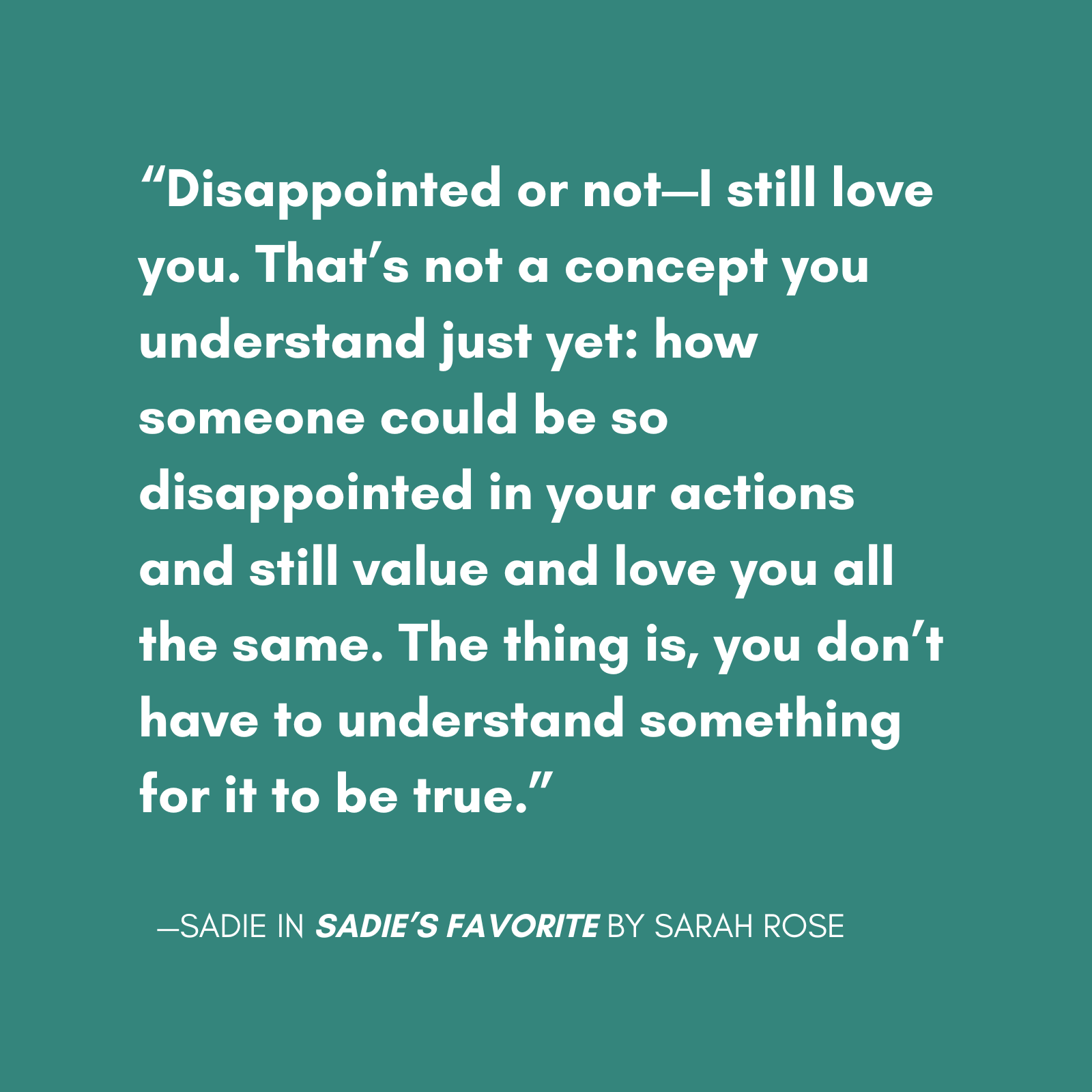Hi, I’m Sarah and I have borderline personality disorder. I use BPD Beautiful, a BPD recovery blog, to help spread awareness and to keep myself accountable in my own recovery. In this post, we’re going to talk about Radical Acceptance—a popular DBT skill that is meant to help you regulate your emotions and manage BPD symptoms & rage.
I don’t know about you but radical acceptance is something I really need to make a part of my everyday life. While I’ve made some progress over the last couple of years, I’ve still got a long way to go when it comes to mindfully accepting things I can’t change. It’s an uphill battle.
This post was put together to help guide you (& me!) in times of high stress—so feel free to bookmark it and look it over the next time you’re facing a trigger or a situation you’d like to radically accept. We’ll touch on what is radical acceptance, tips for practicing radical acceptance, setting radical acceptance goals, examples of radical acceptance coping statements and more.
What is Radical Acceptance?
According to The DBT Therapy Skills Workbook:
“Increasing your ability to tolerate distress starts with a change in your attitude. You’re going to need something called radical acceptance.
Often, when a person is in pain, his or her first reaction is to get angry or upset or to blame someone for causing the pain in the first place. But unfortunately, no matter who you blame for your distress, your pain still exists and you continue to suffer. In fact, in some cases, the angrier you get, the worse your pain will feel.
Getting angry or upset over a situation also stops you from seeing what is really happening. Have you ever heard the expression “being blinded by rage”? This often happens to people with overwhelming emotions. Criticizing yourself all the time or being overly judgmental of a situation is like wearing dark sunglasses indoors. By doing this, you’re missing the details and not seeing everything as it really is. By getting angry and thinking that a situation should never have happened, you’re missing the point that it did happen and that you have to deal with it.
So, to review—being overly judgmental of a situation or overly critical of yourself often leads to more pain, missed details, and paralysis. Obviously, getting angry, upset, or critical doesn’t improve a situation. So what else can you do?
The other option, which radical acceptance suggests, is to acknowledge your present situation, whatever it is, without judging the events or criticizing yourself. Instead, try to recognize that your present situation exists because of a long chain of events that began far in the past. Denying this chain of events does nothing to change what has already happened. Trying to fight this moment or say that it shouldn’t be only leads to more suffering for you.
Radical acceptance means looking at yourself and the situation and seeing it as it really is.
Keep in mind that radical acceptance does not mean that you condone or agree with bad behavior in others. But it does mean that you stop trying to change what’s happened by getting angry and blaming the situation. Refocus your attention on what you can do now. This will allow you to think more clearly and figure out a better way to cope with your suffering.”
“THIS STORY WILL HELP SO MANY PEOPLE.” -BETA READER
From the creator of BPD Beautiful, Sadie’s Favorite tells the story of a girl lost, a woman recovered and the trauma in between. Coming October 25th.
Tips for Practicing Radical Acceptance
- Observe that you are fighting against reality when you think things like, “It shouldn’t be this way.” “This isn’t fair.” “This is not what I wanted.”
- Remind yourself that your reality, no matter how unpleasent, cannot be changed.
- Acknowledge that a chain of events led to this moment.
- Accept responsibility without self-judgement, instead accept responsibiliy with self-compassion. It’s not black or white. It’s not the fault of one person or another. Look at your behavior objectively.
- Practice acceptance with not only your mind, but your body and spirit. Be mindful of your breath, posture, and use DBT skills like willing hands (sit back with your hands unclenched, palms up, fingers relaxed).
- See the gray. People and situations are rarely all good or all bad. Practice seeing how a situation or person can have aspects that you both like and dislike.
- Practice opposite action. Write down what your behavior would look like if you accepted the facts.
- Plan ahead. Think about events that seem unacceptable and visualize how you should and would cope.
- Embrace disappointment, sadness or grief. Validate your own feelings by not suppressing these painful emotions.
- Remain mindful of physical sensations throughout your body such as tension in your neck or pain in your stomach.
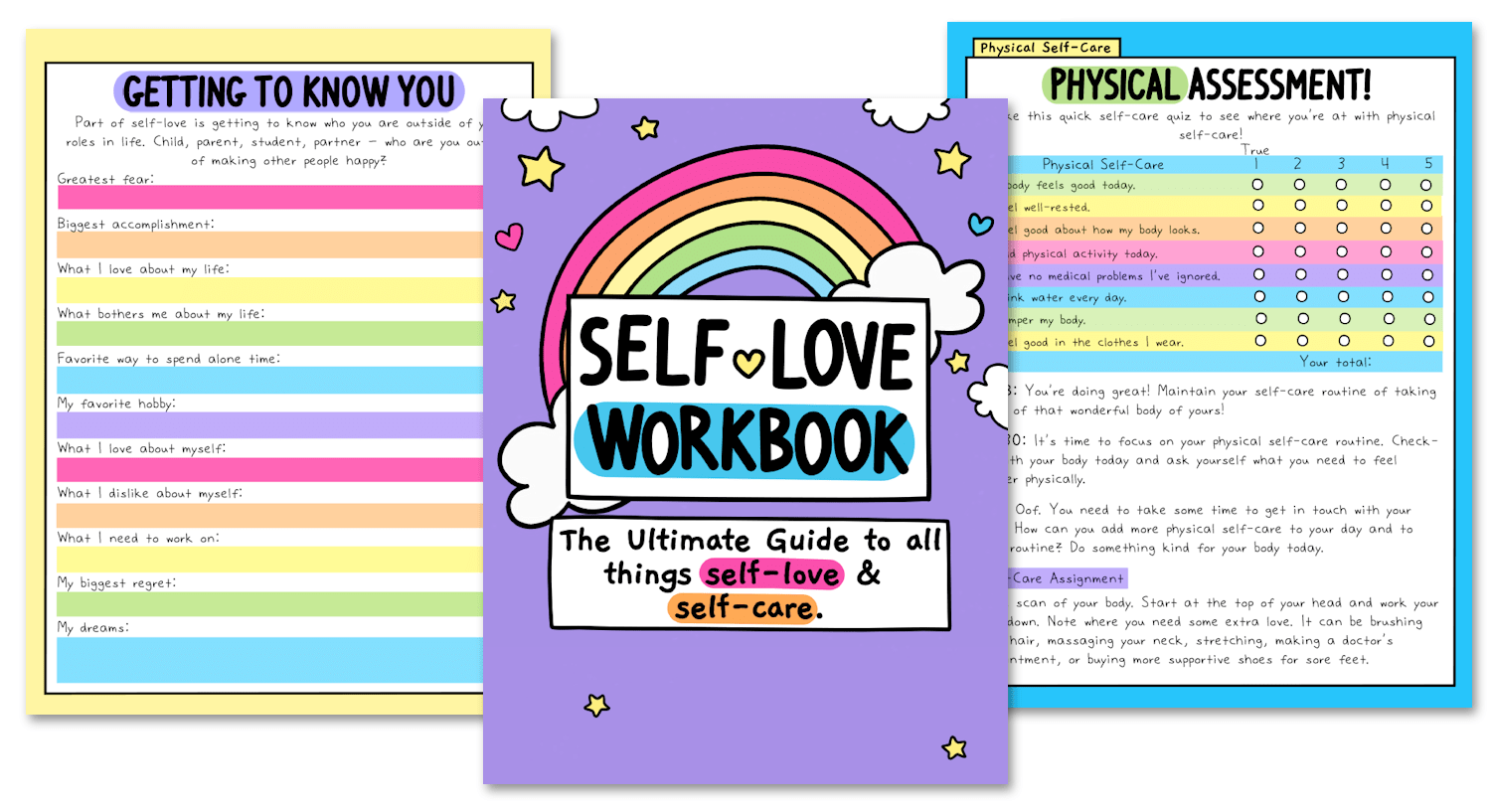
The Self-Love Workbook
This 103 page digital workbook comes with three different PDFs – full color, a version with no color backgrounds, and a black and white version (to save on printing costs). You get access to all three and you can print whichever one works for you!
DOWNLOAD NOW FOR $10Each .pdf is capable of being filled in digitally. With Adobe on your desktop computer or on an app like XoDo for your phone, you can type your answers into the .pdf and save your progress without ever needing to print it.
Setting Radical Acceptance Goals
List or think of three small situations that you would like to radically accept going forward.
Ex. a controversial post on Facebook or a stranger cutting in front of you in line
Now, think of three medium sized situations that you’d like to radically accept.
Ex. I burned the food I was cooking or my child is talking back
Lastly, list three big situations, the most stressful things that you can think of, that you would like to radically accept going forward.
Ex. I didn’t get the job that I applied for or my partner left me

Questions to Reflect on a Past or Current Distressing Situation
- What happened in the upsetting situation/event?
- What past events led up to this?
- How were you involved in the development of this situation?
- How were others involved in the development of this situation?
- What part of this situation do you have control over?
- What part of this situation do you NOT have control over?
- How did you respond/react to this situation?
- How did your own response make you feel?
- How did your own response make others feel?
- How could you have responded differently to this situation?
- If you had radically accepted this situation instead of reacting, how would the outcome be different?
Radical Acceptance Coping Statements
“This is the way it has to be.”
“All events have led up to now.”
“I can’t change what’s already happened.”
“It’s no use fighting the past.”
“Fighting the past only blinds me to my present.”
“The present is the only moment I have control over.”
“I am the only person I have control over.”
“It’s a waste of time to fight what’s already occurred.”
“The present moment is perfect, even if I don’t like what’s happening.”
“This moment is exactly as it should be, given what’s happened before it.”
“This moment is the result of over a million other decisions.”

As a BetterHelp affiliate, we receive compensation from BetterHelp if you purchase products or services through the links provided.
BPD Resources
BPD Characters: Read the first 6 chapters of Sadie’s Favorite – an upcoming novel by Sarah Rose, creator of BPD Beautiful.
Get 20% off your first month of BetterHelp. Get matched with a licensed therapist within 48 hours. Subscriptions as low as $65/week, billed every 4 weeks. Cancel anytime.
Manage your BPD symptoms with a printable workbook.
See our recommended list of books about BPD.
Start a Discussion
- Tell us your own radical acceptance coping statement in the comments.
- Practice the skill by finding and reading a controversial news story, visiting a controversial page on Facebook or doing something you otherwise have a hard time accepting.
- While you’re doing whatever controversial thing you’ve chosen to do, begin radically accepting it without judgement or criticism. Make a point to use the coping statements that were in this post.
Pin This Post
If you’ve liked this post, please pin it to Pinterest or share it online to help spread awareness of BPD. I hope this post has helped bring you more peace, joy or love into your day—even if just for a moment. Have a blessed day!
